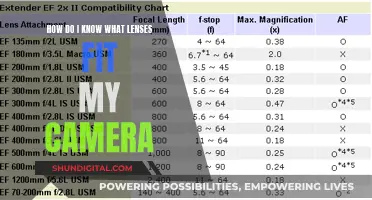
Purple fringing is a common optical issue in photography, particularly digital photography, where an unfocused purple or magenta ghost image appears on a photograph. This phenomenon, known as chromatic aberration, occurs when a lens fails to bring all wavelengths of colour to the same focal plane, resulting in blurred images or noticeable coloured edges around objects. While it can occur with various colours, the appearance of purple in photographs is a common manifestation of chromatic aberration, especially in the presence of high-contrast areas.
| Characteristics | Values |
|---|---|
| Term | Purple fringing |
| Other Names | PF, color fringing |
| Definition | An unfocused purple or magenta "ghost" image on a photograph |
| Cause | Lens unable to bring all wavelengths of color to the same focal plane |
| Occurrence | More common in lower-priced lenses, older lenses, and bright harsh light |
| Prevention | Use of lens hood, UV filter, best aperture, and avoiding high-contrast scenes |
| Fix | Use of software like Adobe Lightroom, or converting the image to black and white |
What You'll Learn

Chromatic aberration
Longitudinal chromatic aberration, also known as "LoCA" or "bokeh fringing", occurs when different wavelengths of colour do not converge at the same point after passing through a lens. This can result in red, green, blue, or a combination of colours appearing around objects throughout the image, even in the centre. This type of chromatic aberration can be significantly reduced by stopping down the lens or using post-processing software such as Adobe Photoshop Lightroom, which has a "De-Fringe tool" to correct for fringe colours.
Lateral chromatic aberration, also known as "transverse chromatic aberration", occurs when different wavelengths of colour coming at an angle focus at different positions along the same focal plane. This type of chromatic aberration is typically visible towards the corners of the image in high-contrast areas, with blue and purple fringing commonly seen on some fisheye, wide-angle, and low-quality lenses. Lateral chromatic aberration cannot be removed by stopping down the lens but can be reduced or removed using post-processing software.
While modern lens manufacturers use techniques to reduce chromatic aberrations, it is still a common issue for photographers. Chromatic aberration can be minimised by using techniques such as avoiding high-contrast scenes, adjusting the focal length, stopping down the aperture, and centring the main subject in the image. It can also be removed using post-processing software or by converting the image to black and white.
Camera Lenses: Are Their Filters Universal?
You may want to see also

Axial chromatic aberration
In digital sensors, axial chromatic aberration causes the red and blue planes to be defocused, assuming that the green plane is in focus. This can be challenging to rectify during post-processing. However, it is important to note that axial chromatic aberration is more susceptible to reduction by stopping down the lens compared to lateral chromatic aberration.
Understanding Spherical Aberration in Camera Lenses
You may want to see also

Lateral chromatic aberration
Unlike longitudinal chromatic aberration, lateral chromatic aberration never shows up in the centre of an image and is only visible towards the corners in high-contrast areas. It is not affected by stopping down the lens, but it can be removed or reduced in post-processing software.
In digital sensors, transverse chromatic aberration results in the red, green, and blue planes being at different magnifications. It can be corrected by radially scaling the planes appropriately so they line up.
Save Money on Camera Lenses: Smart Shopping Tips
You may want to see also

Longitudinal chromatic aberration
The effects of longitudinal chromatic aberration can be observed in images as coloured fringes or edges around objects, particularly in high-contrast scenes. These coloured fringes may include red, green, blue, or a combination of these colours. The aberration is most noticeable in images with bright areas of broad-spectrum illumination, such as daylight or gas-discharge lamps, where dark edges adjacent to these bright areas may exhibit purple or magenta "ghost" images.
Leica Lenses: Panasonic Cameras' Secret Weapon?
You may want to see also

Lateral chromatic aberration
While many modern lens manufacturers employ specific techniques to reduce chromatic aberration using achromatic/apochromatic optical designs and special extra-low dispersion elements, chromatic aberration is still an issue on most prime and zoom lenses. The good news is that many modern mirrorless cameras and DSLRs incorporate special in-camera post-processing techniques to reduce and even eliminate lens chromatic aberrations, and there are plenty of software tools that can be used after the image is taken to deal with the issue.
Pentax Lenses: Compatibility with Pentax Cameras
You may want to see also
Frequently asked questions
Camera lenses are not inherently purple, but they may appear to have a purple tint due to a phenomenon called purple fringing or chromatic aberration.
Purple fringing is the term used to describe an unfocused purple or magenta "ghost" image on a photograph, usually appearing as a colouring and lightening of dark edges adjacent to bright areas.
Purple fringing occurs when a lens is unable to bring all wavelengths of colour to the same focal plane, resulting in a purple fringe around objects, especially in high-contrast lighting conditions.
There are several strategies to prevent or reduce purple fringing, including using a lens hood, a UV filter, avoiding high-contrast scenes, and using the best aperture for your lens.







